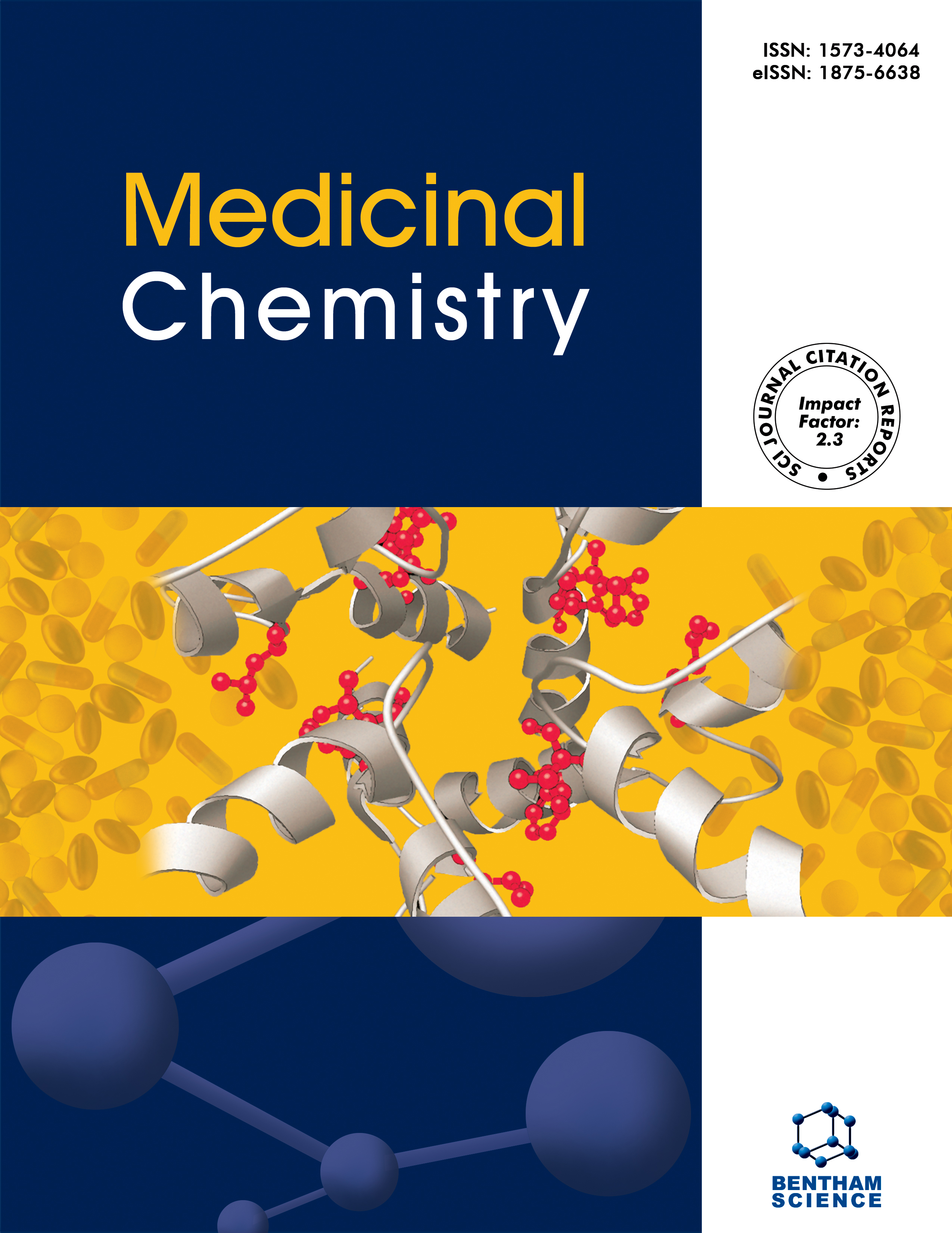- Home
- A-Z Publications
- Medicinal Chemistry
- Issue Home
Medicinal Chemistry - Current Issue
Volume 21, Issue 4, 2025
-
-
One-Pot Synthesis of Benzoxazoles: A Promising Approach to Aromatic Heterocyclic Compounds Preparation
More LessAuthors: Monika Chauhan and Sumitra NainConsidering the necessity for broad synthetic operations, integrating various reactions into a single pot operation is an intriguing approach to improve synthetic efficiency. One-pot operations may serve as an effective way to minimize the amount of chemical waste generated, save time, avoid multiple purification processes, accomplish numerous transformations, and make multiple bonds in one pot. Therefore, “pot econ Read More
-
-
-
Pharmacological Evaluation of Bioisosterically Replaced and Triazole-Tethered Derivatives for Anticancer Therapy
More LessCancer has been the cause of the highest number of deaths in the human population despite the development and advancement in treatment therapies. The toxicity, drug resistance, and side effects of the current medicaments and therapies have left the void for more research and development. One of the possibilities to fill this void is by incorporating Triazole moieties within existing anticancer pharmacophores to d Read More
-
-
-
In Silico Analysis and Molecular Docking of Human Antimicrobial Peptides for Targeting Monkeypox Virus: Potential Therapeutic Implications of Histatin 5 Peptide
More LessBackgroundMonkeypox, a viral zoonotic disease akin to smallpox, has posed significant public health challenges, particularly in Africa. Recent outbreaks, including those in India, underscore the global threat it poses.ObjectiveIn this study, we explore a novel approach to combat monkeypox virus (MPXV) infection by targeting its surface proteins, crucial for viral entry and fusion.MethodsEmploying advanced computational tec Read More
-
-
-
Synthesis, Characterization, and In Vitro and In Silico Studies of New Triazole Derivatives as Aromatase Inhibitors
More LessAuthors: Zeynep Livanur Üzmez, Derya Osmaniye, Yusuf Özkay and Zafer Asım KaplancıklıIntroductionBreast cancer is the most common type of cancer among women. Steroidal or non-steroidal aromatase inhibitors (NSAIs) are used clinically, and in most cancer diseases, resistance is the most important problem.MethodsThe nitrogenous heterocyclic ring is noteworthy in the structure of non-steroidal aromatase inhibitors. This is the pharmacophore structure for aromatase inhibition. Because the enzyme inter Read More
-
-
-
Design and Synthesis of (2,3-dichloro-4-(3-(substituted Phenyl)acryloyl)phenoxy) Substituted Carboxylic Acid as Potent Glutathione-s-transferase Inhibitors, Anti-breast-cancer Agents and Enhancing Therapeutic Efficacy of Anticancer Agents
More LessAuthors: Afreen Begum Abdul Qayyum, Syed Ayaz Ali and Santosh Namdeo MokaleBackgroundEthacrynic acid is a dynamic agent holding alpha-beta unsaturated carbonyl unit in its structure which imparts superiority and extraordinary advantage of displaying multiple biological activities such as anticancer, antiviral, anti-malarial effect, diuretic effect and inhibits the Glutathione-s-transferase p1-1 enzyme which produces hindrance in the pathway of apoptosis. Ethacrynic acid is an inhibitor of Glutathi Read More
-
Volumes & issues
-
Volume 21 (2025)
-
Volume 20 (2024)
-
Volume 19 (2023)
-
Volume 18 (2022)
-
Volume 17 (2021)
-
Volume 16 (2020)
-
Volume 15 (2019)
-
Volume 14 (2018)
-
Volume 13 (2017)
-
Volume 12 (2016)
-
Volume 11 (2015)
-
Volume 10 (2014)
-
Volume 9 (2013)
-
Volume 8 (2012)
-
Volume 7 (2011)
-
Volume 6 (2010)
-
Volume 5 (2009)
-
Volume 4 (2008)
-
Volume 3 (2007)
-
Volume 2 (2006)
-
Volume 1 (2005)
Most Read This Month Most Read RSS feed
Article
content/journals/mc
Journal
10
5
false
en


